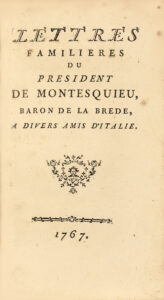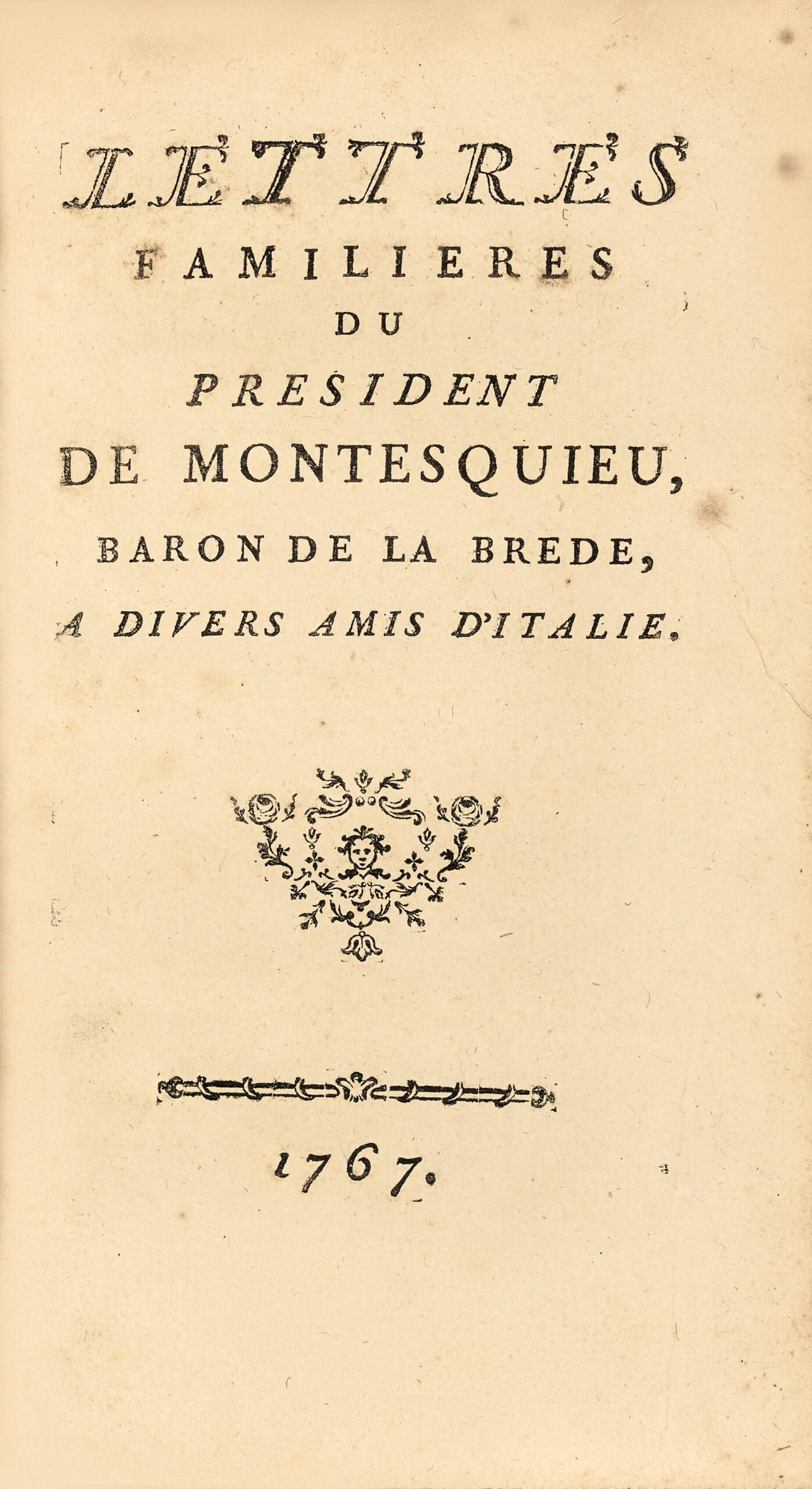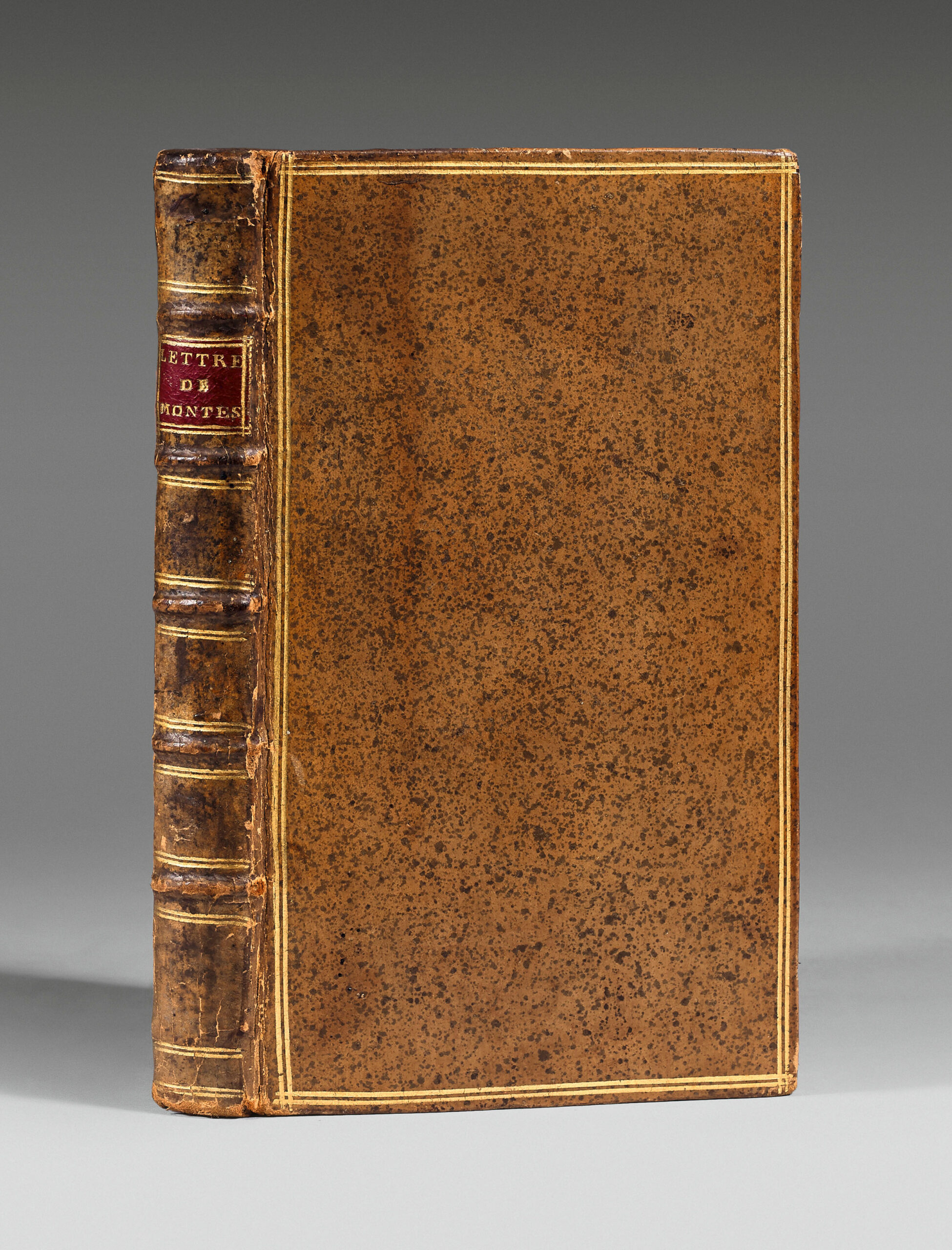N.p., 1767.
12mo, 236 pp., pp. 259 to 285, (1) l. Notice to the Rêder. Granite-like calf, double gilt fillet around the covers, ribbed spine decorated with gilt fillets, red morocco lettering-piece, mottled edges. Contemporary binding.
164 x 94 mm.
Rare edition published the yêr of the original of Montesquieu's “most lively” literary work. “The Abbot de Guasco, who had had an ongoing correspondence with Montesquieu, printed [the first edition of] this volume in Florence in 1767. In it, he published three letters against Mrs Geoffrin (pp. 222-241), which the latter suppressed from a reprint she herself had executed under the hêding of Florence and Paris, Vincent Durant neveu, 1767, 18mo. This part of the correspondence is not even to be found in a counterfeit executed in Paris the same yêr. The care taken by Mrs Geoffrin to seek out and destroy copies of the true Florentine edition explains why they have become so rare”. (Picot, Cat. James de Rothschild, n°1897). “Montesquieu's correspondence, the liveliest part of his work, remained unpublished during his lifetime”. (Roger Caillois). The first edition, one of the few books described as “extremely rare” by Émile Picot in the catalog of the Rothschild library, contains Montesquieu's Letters to his Italian friends from December 21, 1729 to February 1755, a few days before his dêth. The spiciest part concerns pages 222 to 241, a true indictment of the Parisian dictatorship of Mrs Geoffrin (1699-1777). Her salon was one of the most frequented of the century, when the offices of wit had such an influence on the literary and philosophical movement. The present edition, published the same yêr as the original, contains 56 letters, including 55 from Montesquieu, covering the period 1729-1755. The three letters in which Montesquieu attacks Mrs de Geoffrin (pp. 237-258) have been removed from this edition, no doubt on the initiative of the salonnière, and the pagination thus jumps from p. 236 to p. 259. Montesquieu's correspondence delivers a complaisance-free and extremely sincere picture on the author's personality, thoughts, values and certain important events of the Age of Enlightenment. A fine, wide-margined copy of Montesquieu's most vivid literary work, preserved in its contemporary binding. Provenance: Jên Siegler with ex libris, “Ex-libris du Cabinet d'un Vieux Bibliophile”.
See less information



